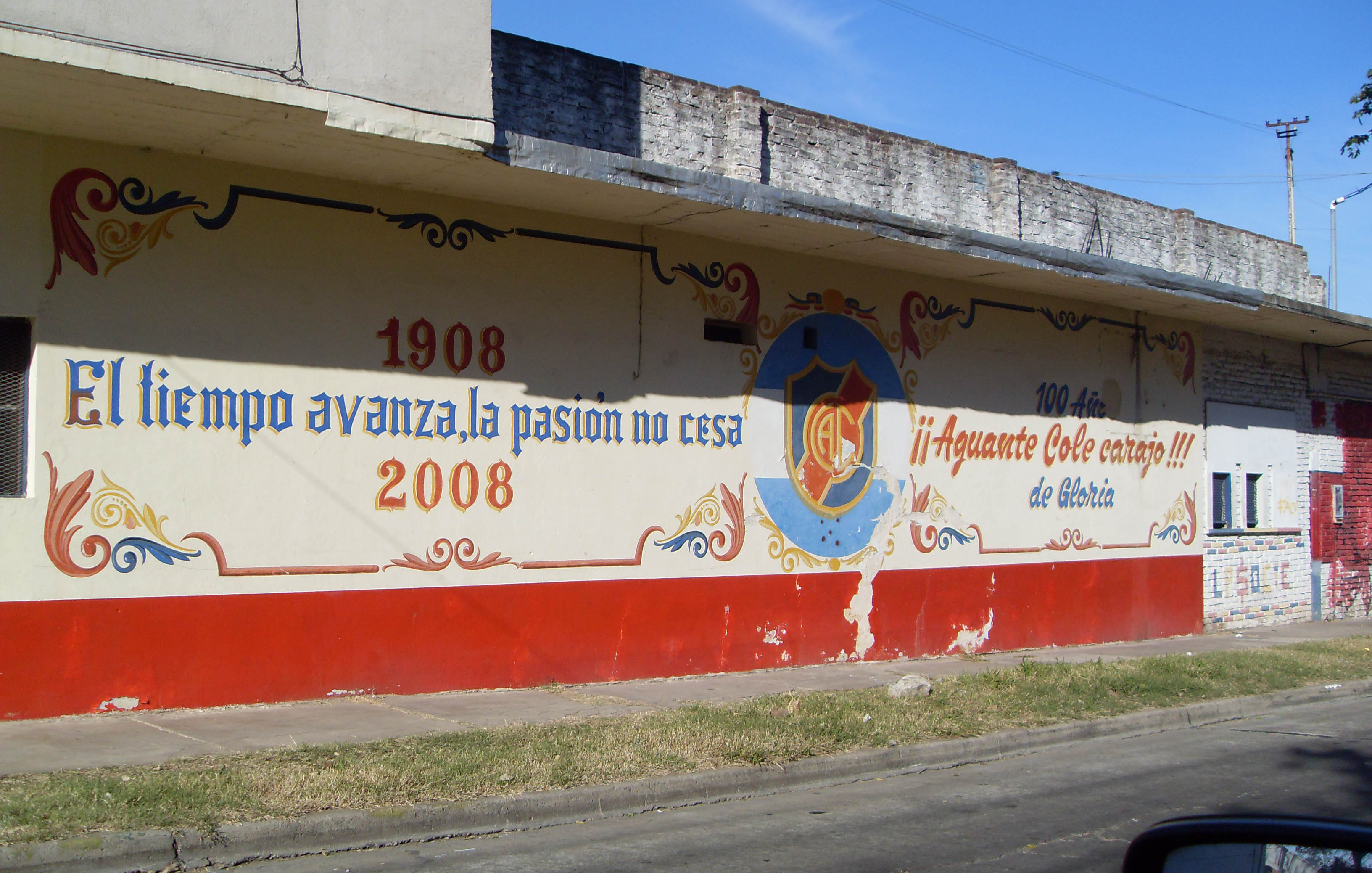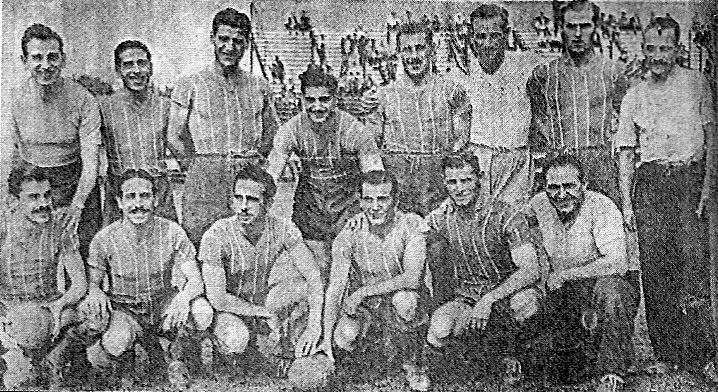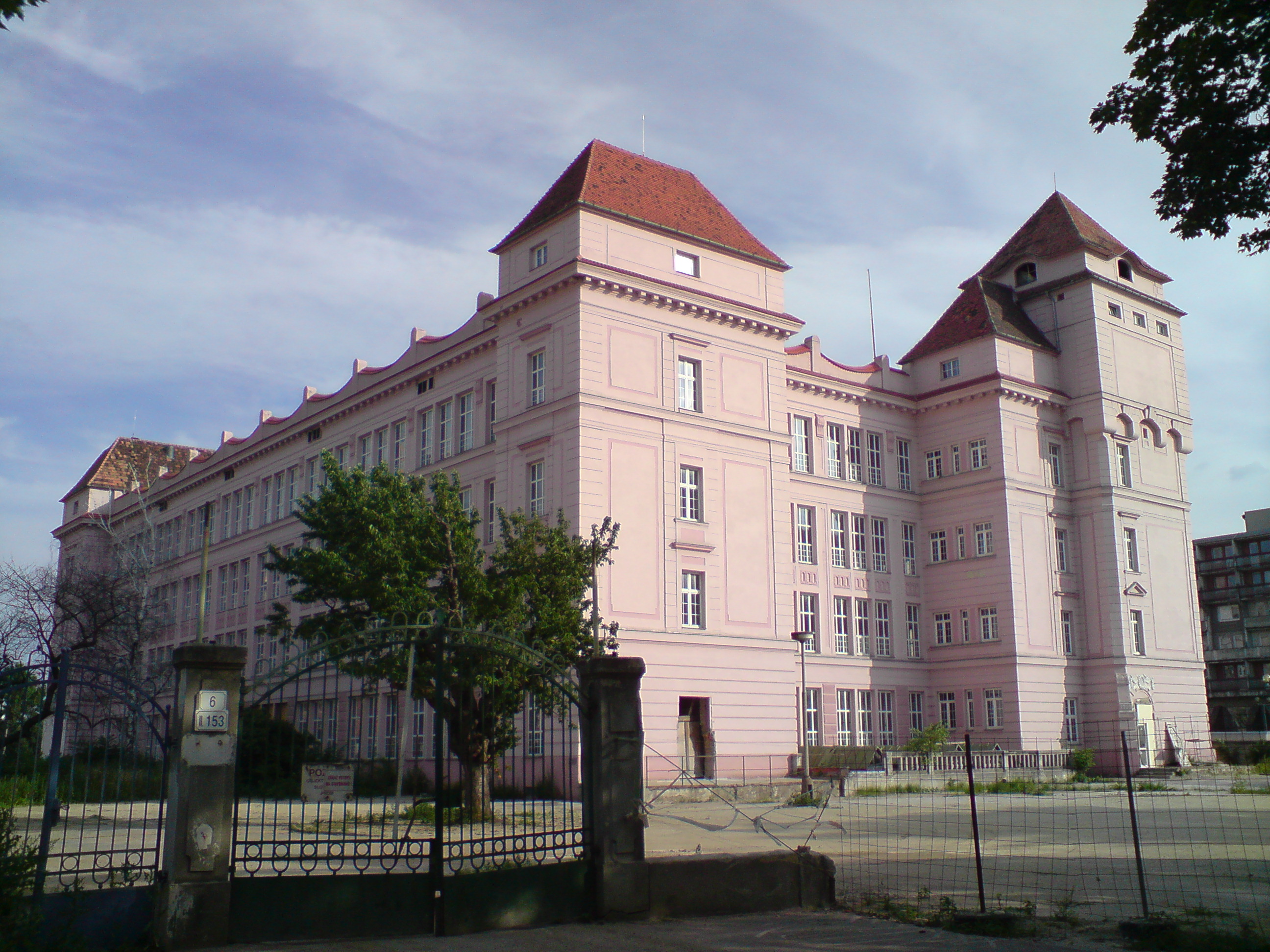|
Florida Oeste, Buenos Aires
Florida Oeste is a city of the Vicente López Partido in the northern suburbs of Greater Buenos Aires, Argentina. It is principally a middle-class and industrial neighbourhood located between the ''barrios'' of Villa Martelli and Munro, also in the same ''partido'' ( department). Location The city is located between Avenida de los Constituyentes (in the limit with General San Martín Partido) and the Autopista Pascual Palazzo (mostly known as "Panamericana" or "Acceso Norte"). This highway divides the district into two neighborhoods: Florida Este (from Panamaricana to Maipú Avenue) and Florida Oeste (from Panamericana to Constituyentes Avenue). The other boundaries are Antonio Malavar (at north) and Carlos F. Melo (at south) streets. Florida Oeste is served by the Belgrano Norte Line, which provide easy access to the city of Buenos Aires as well as north of GBA, such as Boulogne Sur Mer, Grand Bourg and Del Viso. Florida Oeste's main commercial areas are centered on Ge ... [...More Info...] [...Related Items...] OR: [Wikipedia] [Google] [Baidu] |
Greater Buenos Aires
Greater Buenos Aires ( es, Gran Buenos Aires, GBA), also known as the Buenos Aires Metropolitan Area ( es, Área Metropolitana de Buenos Aires, AMBA), refers to the urban agglomeration comprising the Autonomous City of Buenos Aires and the adjacent 24 '' partidos'' (districts) in the Province of Buenos Aires. Thus, it does not constitute a single administrative unit. The conurbation spreads south, west and north of Buenos Aires city. To the east, the River Plate serves as a natural boundary. Urban sprawl, especially between 1945 and 1980, created a vast conurbation of 9,910,282 inhabitants in the 24 conurbated ''partidos'', as of 2010, and a total of 12,801,365 including the City of Buenos Aires, a third of the total population of Argentina and generating more than half of the country's GDP. History The term ''Gran Buenos Aires'' ("Greater Buenos Aires") was first officially used in 1948, when Governor of Buenos Aires Province Domingo Mercante signed a bill delineating ... [...More Info...] [...Related Items...] OR: [Wikipedia] [Google] [Baidu] |
Del Viso
Pilar Partido is a partido in the northern part of Greater Buenos Aires in Buenos Aires Province, Argentina. The provincial subdivision has a population of about 232,000 inhabitants in an area of , and its capital city is Pilar, which is around from Buenos Aires. It has universities and schools. Settlements * Pilar * Del Viso * Presidente Derqui * Fátima * La Lonja * Manuel Alberti * Manzanares * Villa Rosa * Villa Astolfi * Zelaya Zelaya may refer to: *Celaya, a city in Mexico *Zelaya Department, a former department of Nicaragua *Zelaya, Buenos Aires Zelaya is a small town of Pilar's Party of the Province of Buenos Aires Republic of Argentina. It borders the parties Esco .... Gallery File:Pilar BarrioCerrado August2017.jpg, Gated neighborhoods are common in Pilar External links Pilar.com(Spanish) (Spanish) Partidos of Buenos Aires Province {{Partidos of Buenos Aires Province ... [...More Info...] [...Related Items...] OR: [Wikipedia] [Google] [Baidu] |
Populated Places Established In 1913
Population typically refers to the number of people in a single area, whether it be a city or town, region, country, continent, or the world. Governments typically quantify the size of the resident population within their jurisdiction using a census, a process of collecting, analysing, compiling, and publishing data regarding a population. Perspectives of various disciplines Social sciences In sociology and population geography, population refers to a group of human beings with some predefined criterion in common, such as location, race, ethnicity, nationality, or religion. Demography is a social science Social science is one of the branches of science, devoted to the study of societies and the relationships among individuals within those societies. The term was formerly used to refer to the field of sociology, the original "science of soc ... which entails the statistical study of populations. Ecology In ecology, a population is a group of organisms of the ... [...More Info...] [...Related Items...] OR: [Wikipedia] [Google] [Baidu] |
Cities In Argentina
This is a list of cities in Argentina. List of Argentine cities of 45,000 to 150,000 inhabitants This is a list of the localities of Argentina of 45,000 to 150,000 inhabitants ordered by amount of population according to the data of the 2001 INDEC Census. * San Nicolás de los Arroyos (Buenos Aires) 133,602 * San Rafael (Mendoza) 104,782 * (Buenos Aires) 103,992 * (Chubut) 103,305 * (La Pampa) 101,987 * (Buenos Aires) 101,010 * (San Luis) 97,000 * (Chubut) 93,995 Morón (BuenosBuenos Aires) 90,382 * (Buenos Aires) 90,313 * Carlos de Bariloche (Río Negro) 90,000 * Maipú (Mendoza) 89,433 * Zárate (Buenos Aires) 86,686 * Burzaco (Buenos Aires) 86,113 * Pergamino (Buenos Aires) 85,487 * Grand Bourg (Buenos Aires) 85,159 * Monte Chingolo (Buenos Aires) 85,060 * Olavarría (Buenos Aires) 83,738 * Villa Krause (San Juan) 83,605 * Rafaela (Santa Fe) 82,530 * Junín (Buenos Aires) 82,427 * Remedios de Escalada (Buenos Aires) 81,465 * La Tablada (Buenos Aires) 80,389 * ... [...More Info...] [...Related Items...] OR: [Wikipedia] [Google] [Baidu] |
1913 Establishments In Argentina
Events January * January 5 – First Balkan War: Battle of Lemnos – Greek admiral Pavlos Kountouriotis forces the Turkish fleet to retreat to its base within the Dardanelles, from which it will not venture for the rest of the war. * January 13 – Edward Carson founds the (first) Ulster Volunteer Force, by unifying several existing loyalist militias to resist home rule for Ireland. * January 23 – 1913 Ottoman coup d'état: Ismail Enver comes to power. * January – Stalin (whose first article using this name is published this month) travels to Vienna to carry out research. Until he leaves on February 16 the city is home simultaneously to him, Hitler, Trotsky and Tito alongside Berg, Freud and Jung and Ludwig and Paul Wittgenstein. February * February 1 – New York City's Grand Central Terminal, having been rebuilt, reopens as the world's largest railroad station. * February 3 – The 16th Amendment to the United States Constitution ... [...More Info...] [...Related Items...] OR: [Wikipedia] [Google] [Baidu] |
Argentine Football League System
The Argentine football league system include tournaments organised by the Argentine Football Association. Clubs affiliated to the body compete in the tournaments, which are split into categories or divisions. Rules establish a system of promotion and relegation, a process where teams are transferred between two divisions based on their performance for the completed season. The best-ranked team or teams in the lower division are ''promoted'' to the higher division for the next season, and the worst-ranked team or teams in the higher division are ''relegated'' to the lower division for the next season. Current league system (2022) Below the second division championship ( Primera Nacional), tournaments leagues are split between two groups, the first of them include the promotion/relegation system for clubs directly affiliated to AFA playing in Primera B, Primera C and Primera D. Those are usually called "zona metropolitana" (metropolitan zone) due to those tournaments have been hi ... [...More Info...] [...Related Items...] OR: [Wikipedia] [Google] [Baidu] |
Argentine Primera División
The Primera División (; en, "First Division"), known officialy as Liga Profesional de Fútbol, or Torneo Binance for sponsorship reasons, is a professional football league in Argentina, organised by the Argentine Football Association (AFA). The Primera División is the country's premier football division and is the top division of the Argentine football league system. It operates on a system of promotion and relegation with the Primera Nacional (Second Division), with the teams placed lowest at the end of the season being relegated. Since 2020, relegation has been suspended due to COVID-19 pandemic. With the first championship held in 1891,''Historia del Fútbol Amateur en la Argentina'', by Jorge Iwanczuk. Published by Autores Editores (1992) - Argentina became the first country outside the United Kingdom (where the Football League had debuted in 1888, and the Scottish and Irish Football Leagues in 1890) to establish a football league. In the early years, only teams fro ... [...More Info...] [...Related Items...] OR: [Wikipedia] [Google] [Baidu] |
Club Atlético Colegiales (Argentina)
Club Atlético Colegiales is an Argentine football club based in Florida Oeste, Buenos Aires. The squad plays in Primera B Metropolitana, the regionalised third division of the Argentine football league system. History The beginning The club was founded on 1 April 1908, in Buenos Aires by a group of anarchists who discussed fighting for better conditions for the working class. That was the reason that originated its first name, "Club Atlético Libertarios Unidos", naming José Garrone as its first president. The colors adopted were red with a horizontal black stripe paying tribute to their anarchist ideology. Libertarios Unidos' first field was placed just beside the Defensores de Belgrano stadium, in the corner of Blandengues and Manzanares streets of Buenos Aires. Libertarios Unidos was soon forced to change its name, because the government had prohibited any anarchist expression (some sources state that it was the Police Chief Ramón Falcón himself who obliged them to ch ... [...More Info...] [...Related Items...] OR: [Wikipedia] [Google] [Baidu] |
Textile Industry
The textile industry is primarily concerned with the design, production and distribution of yarn, cloth and clothing. The raw material may be natural, or synthetic using products of the chemical industry. Industry process Cotton manufacturing Cotton is the world's most important natural fibre. In the year 2007, the global yield was 25 million tons from 35 million hectares cultivated in more than 50 countries. There are five stages of cotton manufacturing: * Cultivating and Harvesting * Preparatory Processes * Spinning — giving yarn * Weaving — giving fabrics * Finishing — giving textiles Synthetic fibres Artificial fibres can be made by extruding a polymer, through a spinneret (polymers) into a medium where it hardens. Wet spinning (rayon) uses a coagulating medium. In dry spinning (acetate and triacetate), the polymer is contained in a solvent that evaporates in the heated exit chamber. In melt spinning (nylons and polyesters) the extruded polymer is cooled in ... [...More Info...] [...Related Items...] OR: [Wikipedia] [Google] [Baidu] |
Sport Club
A sports club or sporting club, sometimes an athletics club or sports society or sports association, is a group of people formed for the purpose of playing sports. Sports clubs range from organisations whose members play together, unpaid, and may play other similar clubs on occasion, watched mostly by family and friends, to large commercial organisations with professional players which have teams that regularly compete against those of other clubs and attract sometimes very large crowds of paying spectators. Clubs may be dedicated to a single sport or to several (multi-sport clubs). The term ''athletics club'' is sometimes used for a general sports club, rather than one dedicated to athletics proper. Organization Larger sports clubs are characterized by having professional and amateur departments in various sports such as bike polo, football, basketball, futsal, cricket, volleyball, handball, rink hockey, bowling, water polo, rugby, track and field athletics, boxing, ... [...More Info...] [...Related Items...] OR: [Wikipedia] [Google] [Baidu] |
Córdoba Central Railway
The Córdoba Central Railway (CCR) (in Spanish: Ferrocarril Central Córdoba) was a British-owned railway company, founded in 1887, that operated a railway network in Argentina which extended from Buenos Aires, north west via Rosario and Córdoba, to Tucumán. Financial problems forced the sale of the company to the Government of Argentina in 1938. When railways were nationalized in 1948 the CC became part of Belgrano Railway. History Beginning The company was founded in 1887 to take over a concession, originally granted to William Temple in 1885, for the construction of a 206 km line, from the Córdoba city suburb of Alta Córdoba to San Francisco. The line was completed in 1888 In October 1887 the Government granted the operation of Ferrocarril Central Norte's 884 km line (that included the Alta Córdoba-Tucumán, Frías-Santiago del Estero and Recreo-Chubicha branches) to Hume Hnos. & Cía (owned by The Hume Brothers) for $ 16,000,000. The concessio ... [...More Info...] [...Related Items...] OR: [Wikipedia] [Google] [Baidu] |
URI Ramon Carrillo
Uri may refer to: Places * Canton of Uri, a canton in Switzerland * Úri, a village and commune in Hungary * Uri, Iran, a village in East Azerbaijan Province * Uri, Jammu and Kashmir, a town in India * Uri (island), an island off Malakula Island in Vanuatu, South Pacific * Uri, Sardinia, a commune in Italy * Uri, Darfur, capital of the Tunjur kingdom People * Uri (name), a given name * Uri (Bible), two people in the Bible * Aviva Uri (1922–1989), Israeli painter * Eelco Uri (born 1973), Dutch water polo player * Helene Uri (born 1964), Norwegian linguist, novelist and children's writer * Jaan Uri (1875–1942), Estonian politician * Joannes Uri (1724–1796), Hungarian orientalist * Vanessa Uri (1981–2004), Filipina actress known as Halina Perez * Ya'akov Uri (1888–1970), Israeli politician Abbreviations * Ultrasound research interface, software * Uniform Resource Identifier, a string of characters used to identify a name or a resource * United Religions Initiative, a ... [...More Info...] [...Related Items...] OR: [Wikipedia] [Google] [Baidu] |








